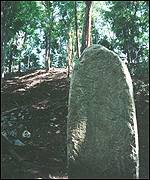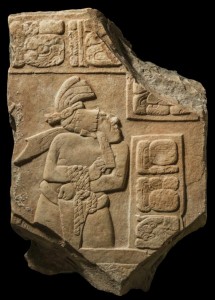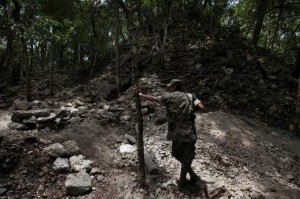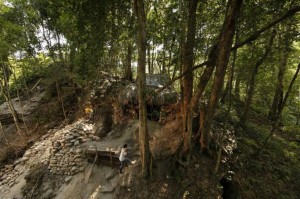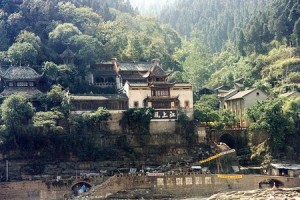How do you decide whether to grade an assignment using a letter grade scale (A, B, C, etc) or a numerical scale (percentage, points, etc)? First, decide what the learning goals are for your assignment. Mastery of content, knowledge of … Continue reading →
Category Archives: Site Feed
Mayan Identity Lost to Looters
The Mayan people, who are indigenous to Mexico and Central America, are publicly perceived as being one the most influential cultures of the Archeological world. While their culture may not be as mysterious as the public imagination believes, it’s slowly being altered by a big issue plaguing archeological sites, looting. As early as 1970, the Mayan city of Xultún , located in northern Guatemala, has been plundered by looters referred to locally as “huechoros”. These huechoros craved tunnels into many of the pyramids adorning the Mayan city and used the tunnels to access the artifacts stored inside. From there the artifacts are takened and placed on the black market to be sold illegally to the affluent for personal want or for display in institutions like museums. The looted materials included stone figurines and statues, hieroglyphic panels, ceramic pottery, and jade jewelry. Though the amount of looting has decreased in the passed years, archeologists are still trying to fully grasp the damage incurred by the huechoros.
Huechoros, who are often just individuals desperate for money, have inflicted grave harm on not only culture of the Mayans but ultimately their extensive history. The city of Xultún was once a major metropolitan center filled with the rich art, culture, and religion that have contributed to the Mayans identity. For example, stone tablets known as Stelae have been frequent favorites of the looters. These tablets describe the deeds of the Mayan Kings and were seen as very valuable to buyers, so looters would divide the tall stones into small pieces. With the destruction of those tablets came the destruction of Mayan history. No longer are archeologists able to visit sites within Xultan pyramids without the telltale signs of looters being present. Not only aren’t artifacts not being found but the tunnels have allowed for rainwater to travel into the structures damaging the remaining artifacts. These looters aren’t just stealing artifacts but also the existence of the people who left them behind.
The government, in conjunction with archeologists, has enacted several measures to halt the looting of the pyramids. Since a majority of the looting is due to financial strife resulting from Guatemala’s Civil War in the 1960’s, the government has enacted new stable avenues of commerce for communities in the jungle. They have also stationed Guatemalan military officials to patrol the city of Xultún on a 24/7 schedule. Archeologists, on the other hand, are now re-excavating the tunnels left behind by the heuchoros in order to find new artifacts for preservation and future reference. There has even been talk of Guatemala arguing for repatriation of stolen artifacts now displayed in American and European museums and galleries. Though many may only view the stolen artifacts as souvenirs to the Mayans once thriving civilization, they also represent the rich history of a prevalent culture. Archeologists are striving to rediscover and preserve the identity of a people whose culture served as a prime example for the modern civilizations we call home today.
Links:
http://ambergriscaye.com/pages/town/article21.html
Further Reading:
The Three Gorges Dam and the Preservation of Archaeological Sites
The Three Gorges Dam along the Yangtze River in China’s Hubei Province is the largest hydroelectric project every constructed. Begun in 1994 and completed in 2009, the dam is a source of hydroelectric power, shipping locks, and flood control for the middle and lower Yangtze River. However, there were quite a few drawbacks of a project flooding an area of more than 600 square kilometers. As water levels rose, nearly 1.3 million people were forced to relocate. The effects of this displacement were devastating to the population and many Chines cultural sites and artifacts, as the places they had to leave behind have some of the oldest history in China.
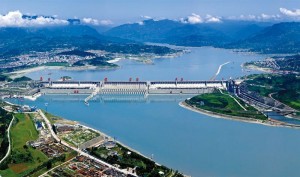
The Three Gorges Dam is the largest hydroelectric project ever constructed, and flooded 632 square kilometers of land beyond the existing banks of the Yangtze River.
Some of the above ground historic sites that were below the final water level have had to be preserved on site or moved. The Baiheliang Stone, the best preserved ancient hydrologic station in the world, has been saved through constructing an underwater museum around it. Shibaozhai, an ancient Buddhist temple built by the Ming emperor Wan Li, is now an island in the center of the new lake, surrounded by a concrete dike. Some structures are being moved altogether, such as Zheng Fei Temple, which was moved one brick at a time and reassembled at a higher elevation. However, much of the above ground archaeology is only left in data collected, as the sites themselves have disappeared beneath the water.
The Three Gorges region is the birthplace of Chinese civilization, but archaeology in the region has traced human habitation of the gorges back to the Paleolithic. In preparation for it to be submerged, over 1000 Chinese archaeologists descended on the region to do what preservation could be done in this culturally rich region before the water covered everything. Budgeting problems hindered efforts both with lack of funds and complications with distribution, but archaeologists have still investigated some 1087 sites throughout the valley, gaining information about habitation of the region as early as 2 million years ago, as well as for nearly every era of habitation since. However, countless more data has been lost to the rising water levels.
Looting, too, has been an enormous problem for the archaeological record as both professional scavengers and local farmers descended on sites throughout the gorge. Many of the sites found in the region were left without surveillance before they were able to be excavated or were submerged. Over the course of dam building, many artifacts from the Three Gorges area went up for sale through dubious channels, most notably a bronze spirit tree dating to the Han dynasty. Though these pieces have been saved from submersion, their context has been destroyed, causing the loss of valuable archaeological data.
Sources
http://digital.csic.es/bitstream/10261/27902/1/Lopez-Pujol_01.pdf
http://news.xinhuanet.com/english2010/culture/2010-11/29/c_13627200.htm
http://gadling.com/2010/11/29/archaeological-treasure-trove-found-at-three-gorges-project-in-c/
http://articles.latimes.com/2003/jun/08/opinion/oe-see8
http://archive.archaeology.org/9611/abstracts/3gorges.html
http://www.npr.org/templates/story/story.php?storyId=17810431
http://archive.archaeology.org/online/news/china.html
http://www.china.org.cn/english/features/Archaeology/96925.htm
http://news.cision.com/se/ifs/i/three-gorges-dam-small,c1262559
Further Reading
More about the Ba people, who flourished in the Three Gorges area until the Warring States Period
http://www.chinaculture.org/gb/en_curiosity/2004-02/11/content_45954.htm
More about history and legend in writing about the Three Gorges region
VHP in Asian Night Market
On Nov.7th, Vassar Haiti Project tabled in the annual Night Market
B is for Bad
I’ll admit it. I feel pretty intimidated sometimes giving out papers and evaluations to students who earned grades lower than A-. It seems more students now than in the recent past come in to talk to me about how disappointed they are … Continue reading →


